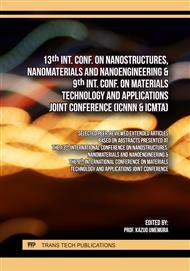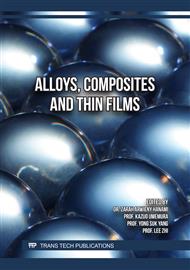p.49
p.57
p.71
p.83
p.91
p.99
p.105
p.111
p.127
Evaluation of the ACDR Forming Uniformity for Large-Size Titanium Alloy Heads Based on FEM and RSM Methods
Abstract:
The manufacturing requirements of isotropy, monolithic forming, suppression of welding deformation, high efficiency, and low cost can all be met by the axial closed die rolling (ACDR) forming process when producing a large-sized TC4 titanium alloy shallow-cavity flange-shaped head. This study combines response surface methodology (RSM) with finite element simulation (FEM) to achieve multi-objective optimization by defining four design variables and three response objectives, resulting in the optimal geometric profile and a matching relationship between the optimal organization and performance of the head. The response model was created using the FEM model of the ACDR forming process of the head, and it was optimized using significance analysis and analysis of variance (ANOVA) based on the simulation results. 3D falls and contour plots were used to determine the ideal process parameters for large-size head forming. The head-forming production was completed in accordance with the process parameters, resulting in a perfect and comprehensive head-forging. Additionally, the flow lines were evenly spaced throughout the cavity and easily observable. Every component's microstructure was discovered to be consistent, with grain sizes up to 5-grade. Additionally, there was less than 3% observed variation in the three-way tensile properties.
Info:
Periodical:
Pages:
111-126
Citation:
Online since:
March 2025
Authors:
Keywords:
Price:
Сopyright:
© 2025 Trans Tech Publications Ltd. All Rights Reserved
Share:
Citation:



